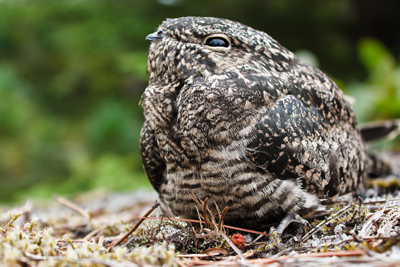CUBAN CAPRIMULGIFORMES - Nightbirds There are four species in this order found in Cuba, the common nighthawk, the Antillean nighthawk, the Cuban Nightjar, and Chuck-will's-widow. |
|||||||||||||||||||||||||||
CUBAN CAPRIMULGIFORMES - Nightbirds
World Status Key |
Species |
Sounds |
Occurrence |
| Common Nighthawk - Chordeiles minor |
Year-round | |
| Audio Credit: xeno-canto.org Mike Nelson | ||
| Antillean Nighthawk - Chordeiles gundlachii |
Year-round | |
| Audio Credit: xeno-canto.org Chris Harrison | ||
| Chuck-will's-widow - Caprimulgus carolinensis |
Non-breeding | |
| Audio Credit: xeno-canto.org Mike Nelson | ||
| Cuban Nightjar - Caprimulgus cubanensis |
Year-round | |
| Audio Credit: xeno-canto.org WScott Connop |
Additional Information
Key: ![]() Profile
Profile ![]() Photos
Photos ![]() Video
Video ![]() Audio
Audio
Common Nighthawk - Chordeiles minor ![]()
![]()
![]()
![]()
![]()
![]()
Common nighthawks breed throughout much of North America and parts of Central America. They are year-round residents in the Caribbean and winter in South America.
Source: Animal Diversity Web Intended Audience: General Reading Level: Middle School
Common Nighthawk - Chordeiles minor ![]()
![]()
![]()
![]()
![]()
![]()
![]()
Common nighthawks are known as bulbats in some areas.
Source: Cornell Lab of Ornithology Intended Audience: General Reading Level: Middle School
Common Nighthawk - Chordeiles minor ![]()
![]()
![]()
![]()
![]()
![]()
![]()
Common nighthawks are most active at dusk and dawn.
Source: Seattle Audubon Intended Audience: General Reading Level: Middle School
Antillean Nighthawk - Chordeiles gundlachii ![]()
![]()
![]()
![]()
The Antillean nighthawk is found in the Florida Keys and the Caribbean.
Source: National Audubon Society Intended Audience: General Reading Level: Middle School
Chuck-will's-widow - Caprimulgus carolinensis ![]()
![]()
![]()
![]()
![]()
In the U.S., Chuck-will's-widow is found from Long Island, New York south to Florida and west to Kansas, Oklahoma, and eastern Texas. It is also found in Canada, Mexico, Central America, the Caribbean, and South America.
Source: Animal Diversity Web Intended Audience: General Reading Level: Middle School
Chuck-will's-widow - Caprimulgus carolinensis ![]()
![]()
![]()
![]()
![]()
Chuck-will's-widows are found in open woodlands.
Source: Internet Bird Collection Intended Audience: General Reading Level: Middle School
Cuban Nightjar - Caprimulgus cubanensis ![]()
![]()
![]()
The Cuban nightjar is found in Cuba, the Dominican Republic, and Haiti.
Source: Internet Bird Collection Intended Audience: General Reading Level: Middle School

